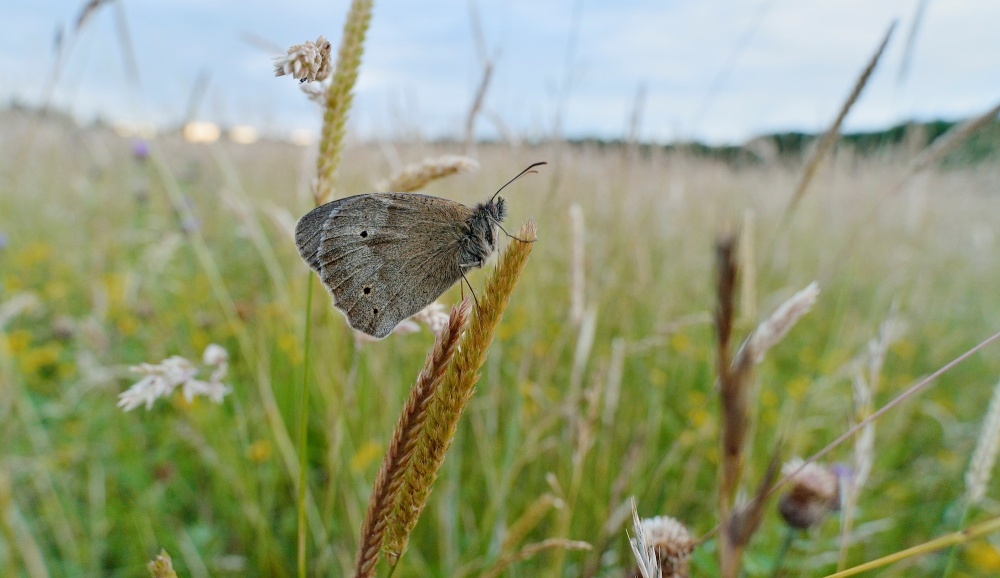A formerly-lifeless property in Yorkshire, England has been quickly turned into a biodiversity hotpot, with soaring invertebrate populations, thanks to an ecological restoration initiative.
The site, called Three Hagges Woodmeadow, could help reverse the UK’s decline in wildlife. More than 1000 invertebrate species—including over 30 that are threatened or endangered—have been identified at a pioneering 25-acre nature recovery project created by the Woodmeadow Trust near the city of York. The site was effectively biodiversity-free only a few years ago.
The findings at Three Hagges Woodmeadow—which was created in 2012 on a former barley field—offer hope of rapidly tackling declines in nature by establishing similar biodiversity hotspots UK-wide.
Little known in the UK, woodmeadows are mixtures of woodland and meadow that combine the biodiversity of both habitats, and are exceptionally rich in life. Over 60 flora species per square meter have been recorded in woodmeadows in Scandinavian and Baltic countries, where they were common until the last century.
“Wildlife has moved into our woodmeadow at a speed that’s taken experts by surprise, even though the site is in its infancy and won’t mature for many years,” said Ros Forbes Adam, Project Leader at the Woodmeadow Trust.
“This is a real cause for optimism. It shows that woodmeadows could help reverse the UK’s catastrophic decline in biodiversity, if created on a large scale and connected to other habitats to form wildlife corridors. Our aim is to see a woodmeadow established in every parish in the country,” she added.
Painstaking annual surveys since 2015, mostly carried out by expert Andrew Grayson, have so far formally recorded the presence of 1,113 invertebrate species—including a wide variety of ladybirds, moths, beetles, grasshoppers and spiders—with more being discovered all the time.
A wealth of insect pollinators, attracted by a huge diversity of wildflowers that form a blaze of beautiful color in the spring and summer, includes 34 bee species, 26 butterfly species, and 43 hoverfly species – none of which would have been found on the site when it was a barley field.
Butterflies include the dingy skipper—a species usually found on chalky soil, and unexpected in Escrick—marbled white, and purple hairstreak. Bees include the red mason bee and wool carder bee, and bumblebees such as the tree bumblebee and red-tailed bumblebee.
Three Hagges Woodmeadow, on the Escrick Estate between Selby and York, is a centre of scientific research, with national experts monitoring mammals, birds, insects, spiders, reptiles, amphibians, wildflowers, trees and soil.
The aim has been to attract and boost species that should be widespread in the UK, although unusual sightings include the yellow-legged clearwing – an insect rarely documented since records began in 1883 – and the third-ever recent British record of the ruby-tailed wasp Chrysis corusca.
Biological richness is maintained and boosted by agricultural methods, including haymaking and grazing, while the trees will be coppiced for poles and charcoal once they are large enough.
The messy edges between woodland and meadow offer niches for a wealth of species – a system famously described by Charles Darwin at the end of The Origin of Species as a “tangled bank”.
Adding a pond to the woodmeadow has attracted further species, including dragonflies, damselflies, water beetles and pond snails, and offers a breeding site for newts and frogs.
The Trust says woodmeadows could help transform the UK’s crippled biodiversity. In living memory, the UK has eradicated 97% of wildflower meadows, two-thirds of its orchards, hundreds of thousands of ponds, hundreds of thousands of kilometers of hedgerow, and has become one of Europe’s least-wooded countries – with 56% of species in decline and 15% threatened with extinction.
Because woodmeadows are superb carbon dioxide sinks, they can help tackle climate breakdown. Woodland can store up to 12 tons of carbon, and meadow three tons, per hectare a year.
Woodmeadows can be any size, and can be created in gardens, urban areas, parks, farmland, and community woods. Orchards, mini-meadows, hedges and woodland can be turned into types of woodmeadow by planting pollinator-friendly shrubs and wildflowers beneath native trees, and ensuring lots of habitat edges.
Photo of meadow brown butterfly at Three Hagges Woodmeadow © L.Campbell.

